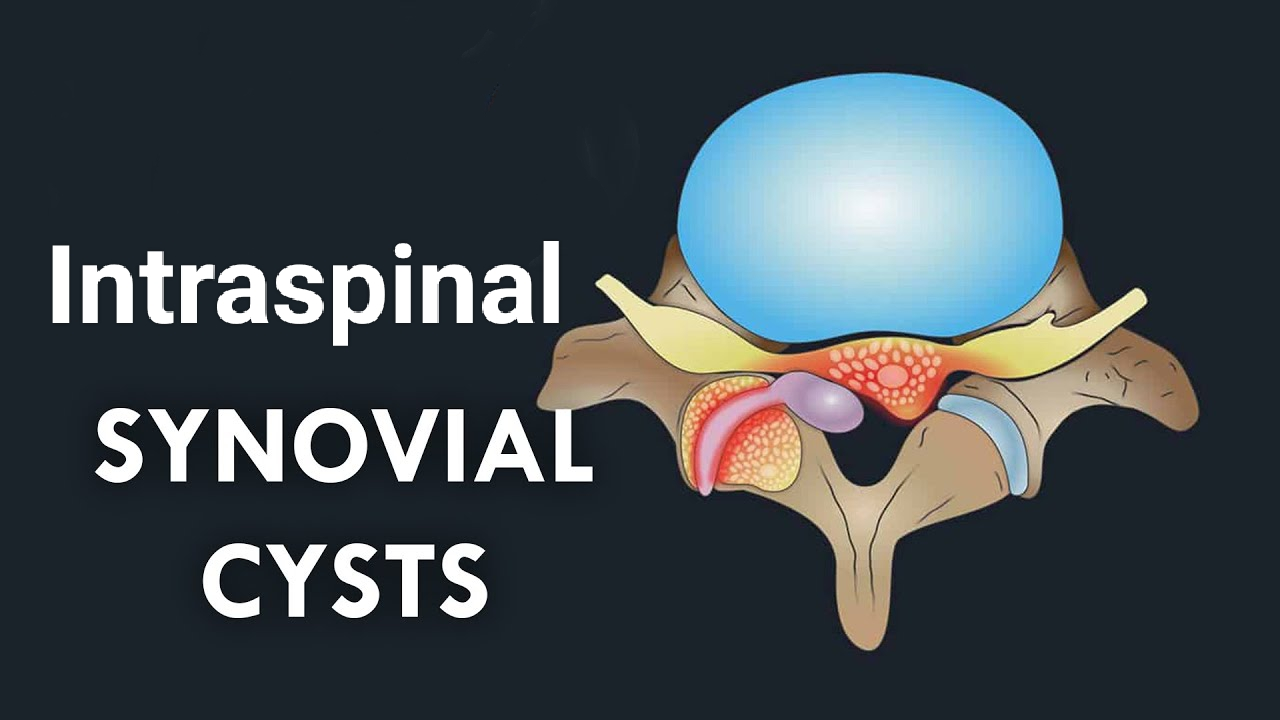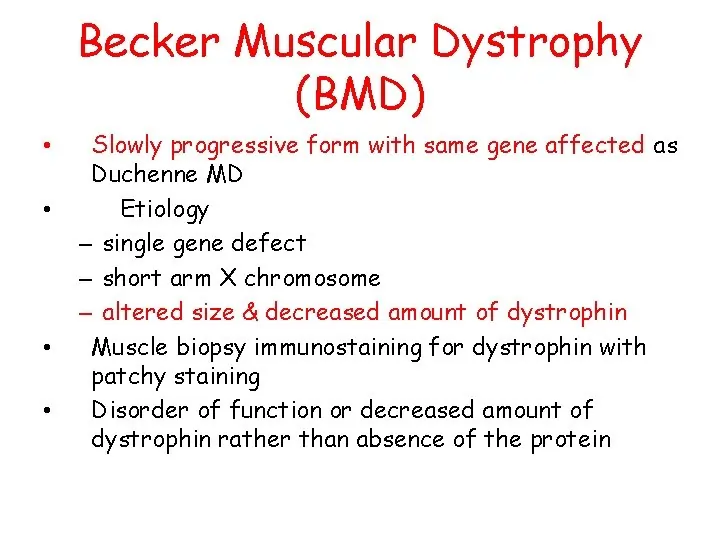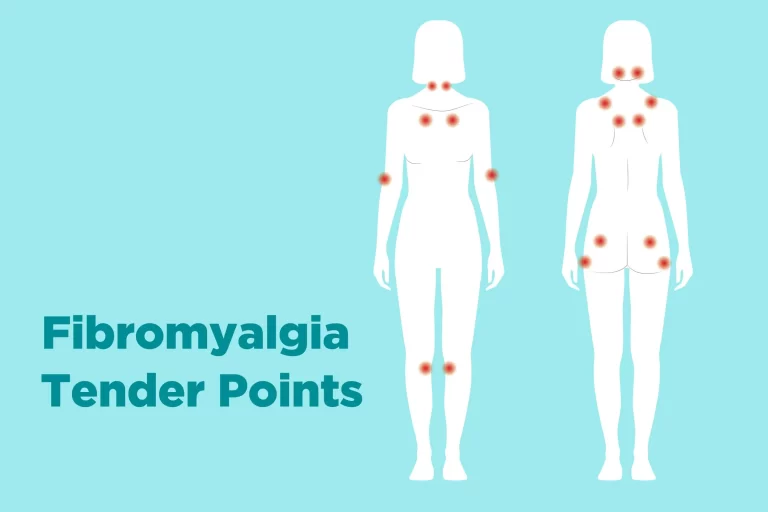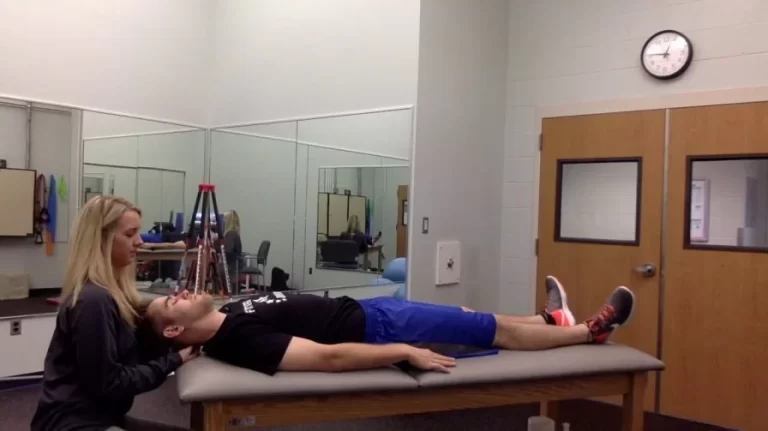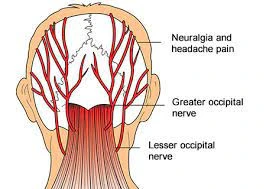Intraspinal Synovial Cyst
Table of Contents
What is an Intraspinal Synovial Cyst?
An intraspinal synovial cyst is a fluid-filled sac that develops within the spinal canal. These cysts are non-cancerous and typically occur in the lumbar spine, which is the lower portion of the back.
Intraspinal synovial cysts are rare, and they can cause pain, numbness, and weakness in the legs. This article will provide a detailed overview of intraspinal synovial cysts, including their causes, symptoms, diagnosis, and treatment.

Causes of Intraspinal Synovial Cyst
The exact cause of intraspinal synovial cysts is not entirely clear. However, it is believed that they are caused by degenerative changes in the spine. As people age, the cartilage that cushions the joints and the discs between the vertebrae can break down, leading to the formation of cysts. The cysts themselves are lined with synovial tissue, which produces a fluid that fills the cyst.
In addition to age-related degenerative changes, other factors that may contribute to the development of intraspinal synovial cysts include:
- Trauma: Injuries to the spine, such as those caused by falls or car accidents, can cause damage to the facet joints or ligaments in the spine, which may lead to the development of synovial cysts.
- Genetic predisposition: Some people may be more genetically susceptible to developing synovial cysts.
- Joint stress: Repetitive or excessive stress on the facet joints or ligaments in the spine, such as that caused by heavy lifting or prolonged sitting, may increase the risk of developing synovial cysts.
- Spinal stenosis: Spinal stenosis is a condition in which the spinal canal narrows, causing pressure on the spinal cord or nerves. This can lead to the development of synovial cysts.
- Spondylolisthesis: This is a condition in which one vertebra slips out of position onto the vertebra below it. This can cause damage to the facet joints and ligaments in the spine, leading to the development of synovial cysts.
Symptoms of Intraspinal Synovial Cyst
Intraspinal synovial cysts can cause a variety of symptoms, depending on their location and size. Common symptoms of intraspinal synovial cysts include:
- Back pain: The cysts can cause pain in the lower back that radiates down the legs. The pain is typically described as a dull ache or a sharp, stabbing sensation.
- Numbness and tingling: The cysts can compress nerves in the spine, leading to numbness or tingling in the legs or feet. This may be felt as a pins-and-needles sensation or as a loss of sensation.
- Weakness: In severe cases, the cysts can compress the spinal cord, leading to weakness in the legs or even paralysis. This may make it difficult to walk or perform other activities.
- Difficulty with balance and coordination: The cysts can cause difficulty with balance and walking, making it more challenging to perform daily activities.
- Bowel or bladder dysfunction: In rare cases, large cysts that compress the spinal cord can cause problems with bowel or bladder control.
The symptoms of intraspinal synovial cysts tend to worsen over time and may become more severe with physical activity or prolonged standing or sitting.
Diagnosis
The diagnosis of an intraspinal synovial cyst typically involves a combination of medical history, physical examination, imaging studies, and diagnostic procedures. Here are some of the common methods used for diagnosis:
- Medical history and physical examination: The doctor will ask about your symptoms and medical history and perform a physical examination to check for any signs of nerve or spinal cord compression.
- Imaging studies: Imaging tests such as X-rays, MRIs, or CT scans are commonly used to detect the presence of intraspinal synovial cysts. These tests help to visualize the location and size of the cysts and assess the severity of any spinal cord or nerve compression.
- Electromyography (EMG): EMG is a diagnostic test that measures the electrical activity of muscles and nerves. It is sometimes used to evaluate nerve damage and determine the extent of nerve compression caused by the cyst.
- Diagnostic injections: A diagnostic injection may be given to confirm the diagnosis of synovial cysts. The injection contains an anesthetic and a steroid, which are injected into the facet joint. If the injection provides significant pain relief, it suggests that the cyst is the cause of the pain.
- Blood tests: Blood tests may be done to rule out other medical conditions that may be causing symptoms similar to those of synovial cysts.
It is important to receive an accurate diagnosis to determine the underlying cause of symptoms and develop an effective treatment plan.
Treatment of Intraspinal Synovial Cyst
The treatment of intraspinal synovial cysts depends on the severity of the symptoms, the location and size of the cyst, and the underlying cause. Here are some of the common treatment options for intraspinal synovial cysts:
- Conservative treatment: In mild cases, conservative treatment may be sufficient to manage symptoms. This can include rest, physical therapy, anti-inflammatory medication, and pain relievers. Avoiding activities that worsen the symptoms, such as heavy lifting or prolonged sitting, may also be helpful.
- Injection therapy: Injection therapy involves the injection of steroids and anesthetic medications into the cyst or the facet joint to reduce inflammation and relieve pain. This may be done under imaging guidance to ensure the medication is delivered accurately.
- Surgery: Surgery may be necessary in cases where conservative treatment is ineffective or symptoms are severe. The surgical procedure involves removing the cyst and any bone spurs that may be causing nerve compression. In some cases, spinal fusion surgery may be necessary to stabilize the spine.
- Minimally invasive procedures: Minimally invasive procedures, such as endoscopic or microsurgical techniques, may be used to remove the cyst. These procedures typically involve smaller incisions, shorter hospital stays, and a quicker recovery time than traditional open surgery.
- Radiofrequency ablation: Radiofrequency ablation is a procedure that uses heat to destroy the nerves in the facet joint that are causing pain. This may be used in cases where surgery is not an option or is not desired.
It is essential to work closely with your doctor to develop an individualized treatment plan that addresses your symptoms and underlying medical condition. With appropriate treatment, most people with intraspinal synovial cysts can achieve significant pain relief and improve their quality of life.
Physiotherapy Treatment in Intraspinal Synovial Cyst
Conservative physiotherapy management:
- Rest and activity modification: Rest and activity modification are important in the initial phase of conservative management to reduce inflammation and pain. Gradually, physical activity can be increased as symptoms improve.
- Physical therapy: Physical therapy is an essential part of conservative management. Exercises aimed at improving flexibility, strength, and posture can help reduce pain and prevent the recurrence of the cyst. Modalities such as heat and ice, ultrasound, and electrical stimulation may also be used to reduce pain and inflammation.
- Exercises protocol should depend on individual patient condition, but here is a general guideline for exercises based on the different phases of treatment:
- Phase 1: Acute phase
- During the acute phase, the main goal of the exercise is to reduce pain and inflammation. Rest and activity modification is essential to prevent further aggravation of symptoms. The following exercises may be prescribed:
- Gentle range-of-motion exercises: This may include neck or back rotations, flexion and extension, and lateral bending. These exercises should be performed within a pain-free range.
- Breathing exercises: Breathing exercises such as diaphragmatic breathing and pursed lip breathing can help reduce pain and improve relaxation.
- Postural exercises: Postural exercises such as shoulder blade retraction and scapular stabilization exercises can help reduce pain and improve posture.
- Phase 2: Subacute phase
- During the subacute phase, the main goal of the exercise is to improve mobility, flexibility, and strength. The following exercises may be prescribed:
- Stretching exercises: Such as hamstring stretches, hip flexor stretches, and quadriceps stretches can help improve flexibility and reduce tension in the spine.
- Strengthening exercises: strengthening exercises such as pelvic tilts, bridges, and planks can help improve spinal stability and prevent the recurrence of the cyst.
- Aerobic exercise: Aerobic exercises such as walking or stationary cycling can help improve cardiovascular fitness and overall physical health.
- Phase 3: Maintenance phase
- During the maintenance phase, the main goal of the exercise is to maintain the gains achieved in the previous phases and prevent the recurrence of the cyst. The following exercises may be prescribed:
- Core strengthening exercises: core strengthening exercises such as bird dogs, side planks, and Russian twists can help maintain spinal stability and prevent the recurrence of the cyst.
- Aerobic exercise: Aerobic exercises such as walking or swimming should be continued to maintain cardiovascular fitness and overall physical health.
- Postural exercises: Postural exercises such as scapular stabilization exercises and neck retractions can help maintain proper posture and prevent the recurrence of the cyst.
- Education and lifestyle modification: Education about proper body mechanics and ergonomics can help reduce stress on the spine and prevent the recurrence of the cyst. Lifestyle modifications such as weight loss and smoking cessation may also be recommended.
Post-operative Physiotherapy Treatment:
- Early mobilization: Early mobilization is essential to prevent complications such as muscle weakness, joint stiffness, and blood clots. The physiotherapist will design a program that gradually increases mobility and function while avoiding excessive strain on the spine.
- Strengthening exercises: Strengthening exercises are essential to rebuild muscle strength and prevent the recurrence of the cyst. Exercises targeting the core muscles, such as the abdominals and back muscles, are particularly important for spinal stability.
- Range-of-motion exercises: range-of-motion exercises are essential to restore normal joint mobility and prevent stiffness. The physiotherapist will design a program that gradually increases the range of motion while avoiding excessive strain on the spine.
- Pain management: Modalities such as heat and ice, ultrasound, and electrical stimulation may be used to manage pain and inflammation.
- Education and lifestyle modification: Education about proper body mechanics and ergonomics are essential to preventing the recurrence of the cyst. Lifestyle modifications such as weight loss and smoking cessation may also be recommended.
It is important to work closely with your physiotherapist and follow the prescribed exercise program to achieve the best possible outcome.
Precaution
An intraspinal synovial cyst is a fluid-filled sac that develops in the spine, typically in the lumbar region. The following are some precautions that you can take to prevent or reduce the risk of developing an intraspinal synovial cyst:
- Maintain a healthy weight: Excess weight puts added pressure on your spine, which can increase the risk of developing a synovial cyst.
- Engage in regular exercise: Regular exercise helps to strengthen the muscles that support the spine, which can help to reduce the risk of developing a synovial cyst.
- Practice good posture: Poor posture can put added pressure on your spine, which can increase the risk of developing a synovial cyst. Try to maintain a neutral spine position when sitting or standing.
- Avoid heavy lifting: Heavy lifting can put added strain on your spine, which can increase the risk of developing a synovial cyst. If you need to lift heavy objects, use proper lifting techniques and avoid twisting or bending at the waist.
- Seek prompt medical attention: If you experience any symptoms of an intraspinal synovial cyst, such as back pain, leg pain, or numbness, seek prompt medical attention to prevent further complications.
It is important to note that not all intraspinal synovial cysts can be prevented, as some may be caused by underlying conditions such as arthritis or degenerative disc disease. However, taking these precautions can help to reduce the risk of developing a synovial cyst and promote overall spine health.
Conclusion
Intraspinal synovial cysts are fluid-filled sacs that develop in the spinal column, typically in the region of the facet joints. While they are not common, they can cause significant pain and other symptoms for those who develop them. Treatment options include conservative measures, aspiration of the cyst, and surgical removal. Maintaining a healthy weight, having good posture, and avoiding activities that put excessive strain on the back may help reduce the risk of developing these cysts. If you are experiencing symptoms of an intraspinal synovial cyst, it is important to consult with a medical professional for an accurate diagnosis and appropriate treatment.
FAQs
Does a synovial cyst have to be removed?
The decision to remove a synovial cyst depends on several factors, such as the location and size of the cyst, the severity of the symptoms, and the overall health of the patient. In some cases, a synovial cyst may not require treatment and may resolve on its own.
Can stress cause a synovial cyst?
There is no direct evidence to suggest that stress can cause synovial cysts. Synovial cysts are typically caused by degeneration or trauma to the facet joints of the spine, which leads to the formation of a fluid-filled sac. However, stress can indirectly contribute to the development or worsening of spine-related conditions such as osteoarthritis, which is a common cause of synovial cysts.
While stress may not directly cause synovial cysts, it is still important to manage stress levels and prioritize good self-care practices to support overall health and well-being. Maintaining good posture, regular exercise, and a healthy diet can also help prevent or minimize the risk of developing spine-related conditions that can contribute to synovial cyst formation.Can a synovial cyst cause nerve damage?
Yes, in some cases, a synovial cyst can cause nerve damage if it compresses or impinges on a nerve. These Synovial cysts are fluid-filled sacs that occur mostly near joints, typically in the spine. When a cyst forms in the spinal region, it can grow and press on nearby nerves, causing symptoms such as pain, weakness, numbness, or tingling in the legs or other areas of the body.
Nerve damage caused by a synovial cyst can be serious and may require surgery to remove the cyst and relieve the pressure on the affected nerve. The type of surgery needed may depend on the location and size of the cyst, as well as the severity of the nerve damage.How long is the recovery from synovial cyst surgery?
The recovery time from synovial cyst surgery can vary depending on several factors, such as the location and size of the cyst, the extent of the surgical procedure, and the patient’s overall health.
In general, patients who undergo synovial cyst surgery can expect to stay in the hospital for one to two days after the procedure. During this time, they will be monitored for any complications and may receive pain management medication.
After leaving the hospital, patients will typically need to limit their physical activity and may need to wear a back brace for several weeks to help support the spine and facilitate healing. Physical therapy may also be recommended to improve strength and range of motion.
Most patients can expect to return to their normal activities within several weeks to a few months after surgery, although it may take longer for some individuals to fully recover. Your surgeon will provide you with specific instructions on postoperative care and follow-up appointments to ensure a safe and successful recoveryCan a synovial cyst cause paralysis?
A synovial cyst is a benign fluid-filled sac that forms on or near a joint, typically in the spine. While these cysts can be painful and limit mobility, they are generally not known to cause paralysis.
However, in rare cases, a synovial cyst may compress or impinge on nerves in the spinal cord, which could lead to nerve damage and potentially result in paralysis. Symptoms of nerve compression may include numbness, tingling, or weakness in the legs or other areas of the body.
If you are experiencing symptoms that may be related to a synovial cyst, it is important to consult with a medical professional for an accurate diagnosis and an appropriate treatment plan.

